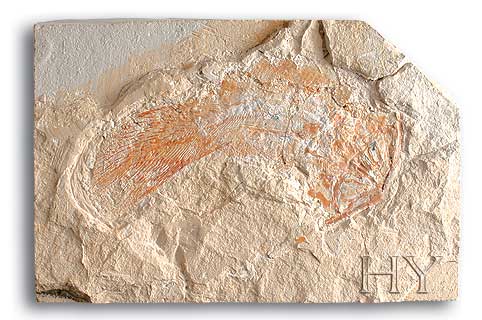Up to 1938, it was believed that coelacanth fossils represented the solution to a serious problem for evolutionists, who needed evidence documenting the imaginary emergence of living things from the sea onto dry land. They therefore took fossils of the coelacanth, which they believed was well suited to this scenario, and began making propaganda regarding them. They interpreted the animal’s fins as "feet about to walk" and another unidentified organ as "a primitive lung." Yet striking proof soon emerged that none of these interpretations had any validity at all. The capture by fisherman of a living coelacanth in 1938 came as a terrible disappointment to evolutionists. James Leonard Brierley Smith, a professor in the Rhodes University Chemistry Faculty, expressed his amazement in these words: "Although I had come prepared, that first sight hit me like a white-hot blast and made me feel shaky and queer, my body tingled. I stood as if stricken to stone. Yes, there was not a shadow of doubt, scale by scale, bone by bone, fin by fin, it was a true Coelacanth." (Samantha Weinberg, A Fish Caught in Time: The Search for the Coelacanth, New York: Perennial Publishing, 2001, p. 20)Detailed examinations were conducted of the coelacanth’s structure and internal organs, which had no primitive features as had been imagined and bore no intermediate-form characteristics of any imaginary primitive forebear. The structure that evolutionists imagined to be a primitive lung was actually a swim bladder filled with fat in the creature’s body. In addition, this creature, depicted as a prospective reptile preparing to emerge onto dry land, was actually a bottom-dwelling fish inhabiting deep waters and not rising above depths of 180 meters. Therefore, according to Dr. Millot, who conducted the investigation, this life form, which should have represented the "missing link," they were seeking, lacked the primitive features of the living thing they claimed had evolved. (S. Weinberg, Op cit, p. 102) Very simply, it was no intermediate form, but had existed with the same complex characteristics in deep waters for 400 million years.
TEMAS
CavourVaticanoSocialismoIluminismoRevolución FrancesaConversoSabateanoJacobinismoMedios de Comunicación MasónicosZionismo PolíticoJove TurcoComité de Unión y ProgresoAbdulhamidAntinaziOrganización Zionista MundialLas Leyes de NurembergMussoliniPrimer Guerra MundialAdolf EichmannGoyimLa Dinastía RothschildGrupos de PresiónConsejo de Relaciones ExterioresRockefellerGuerra FríaStalinRevolución de OctubreUnión SoviéticaBilderbergVietnamComité de Asuntos Públicos Estados Unidos IsraelPresiónjustoSudesteGreciaNuevo Orden MundialMar Rojogeopolíticaveteranoimpuestocostumbres2023antílopetoroConcejo Islámico de EurasiaPremio NóbelHospitalInstitución de Seguridad SocialAli BabacanTurgut OzalasesinatoGaffar OkkanMuhsin YaziciogluNebolusa RosettaAstronomíaRosaSermón de DamascoArma NuclearIyad AllawiNautilussubmarinocélula de buceoAli BardakogluTelevisiónTelevoleCanakkale


